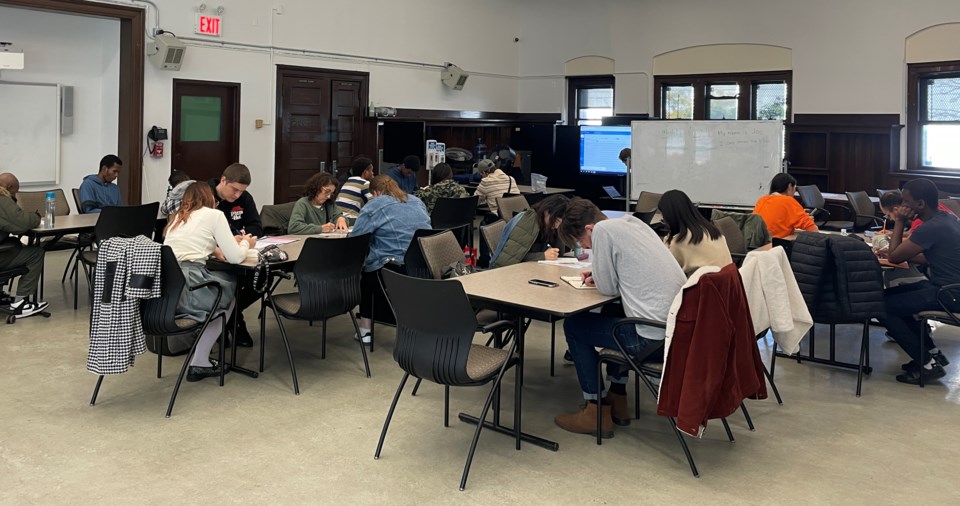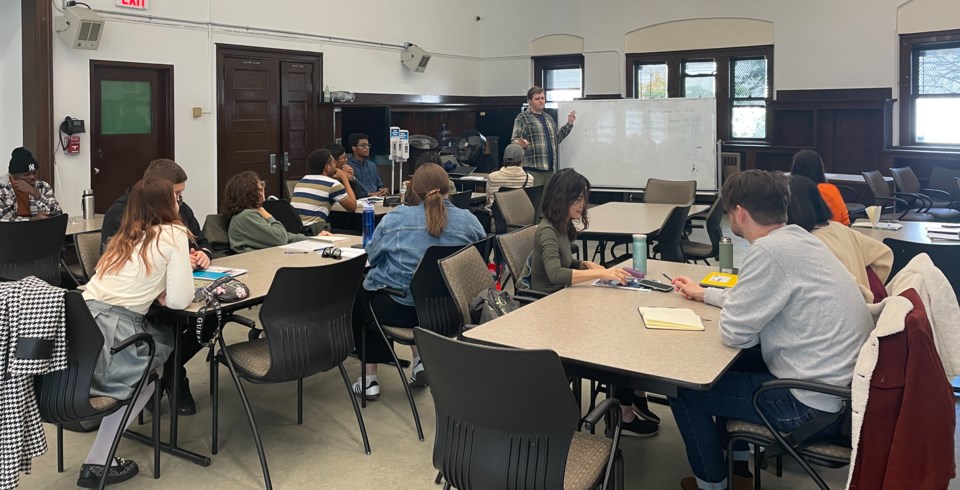On a recent Wednesday morning, students from South Korea, Ukraine, Russia, Honduras and Myanmar shuffled into the second floor of a library in Park Slope to start their day with an English class.
As an ice-breaker, Joe Tropeano, the instructor, directed the students in a game of Two Truths and a Lie. Not a second lapsed before the class broke out in laughter as a student called out Tropeano on his fraudulent guitar skills.
The relaxed scene at the Pacific Library branch was a far cry from what some of the 20 students experienced in their home countries. Some have fled war, violence and political oppression, while others are simply looking for new economic opportunities. A free class like this one at the Brooklyn Public Library (BPL) is one of the first steps for many immigrants to continue getting emergency shelter services, obtain asylum status and get ahead in the city.
The class is a part of the BPL’s English for Speakers of Other Languages (ESOL) adult learning program, which helps asylum seekers, immigrants and others improve their English, according to BPL Press Officer Fritzi Bodenheimer.
As the number of asylum seekers in New York City increased to over 200,000 in the past several years, so has the demand for these services. Bolstered by a recent $1 million grant from the Carnegie Corporation of New York, BPL plans to expand these services to thousands more.
Kerwin Pilgrim, director of adult learning at BPL, estimated that the grant will help the BPL serve an additional 4,600 people, with 300 ESOL students over a two-year lifetime. The grant will also allow BPL to hire new staff including job support specialists, entrepreneurial advisors and a navigator to help immigrants figure out library resources.
For now, the new funding will also help the library system figure out where the classes are needed most.
“Our goal is to meet people where they are,” Pilgrim explained.

The grant will help go toward funding BPL’s beginner, intermediate and advanced ESOL classes which run in 11-week cycles through the fall, winter and spring. In addition, there will be job training and entrepreneurial programs which seek to help immigrants “become more familiar with the workplace culture,” he said.
“The immigrant experience is traumatizing… And we try to be very trauma informed and trauma responsive in our institution to ensure that we provide that type of welfare,” Pilgrim said.
He recalled a time when a former student approached him at the library. Pilgrim initially did not recognize the student, but learned the student had taken part in one of the first computer programs offered at BPL. The student told him that he eventually went on to work as a technology specialist.
“That person was proof-of-concept that I made a difference,” Pilgrim reflected. “That was one of the first programs I started with this lens of outcome, with this lens of making a difference in the communities that we serve.”
Thanks to the Carnegie funding injection, Pilgrim said he is looking forward to another large opportunity to make a difference.
Back at the morning English class, Tropeano worked with the students on parsing soft and hard skills, as well as the difference between skills and abilities. Tropeano then passed around two job listings from LinkedIn, one for a data entry analyst and another for a theater art director. The students then decided which of the qualifications listed in the job description were soft or hard skills or abilities.
“I can dance Punta,” one student scrawled in a notebook under abilities, referring to the traditional Garífuna dance from Honduras and Belize. Another student told Tropeano that he was a critical thinker.
During the three-hour classes, students take tests, engage in activities, converse and are assigned homework.
Pilgrim emphasized that many of the class activities center around career-oriented language and familiarizing the students on how to write a resume and cover letter, and look through and understand job listings.
“People are here to learn,” Tropeano said. “They’re here for a tangible skill.”




